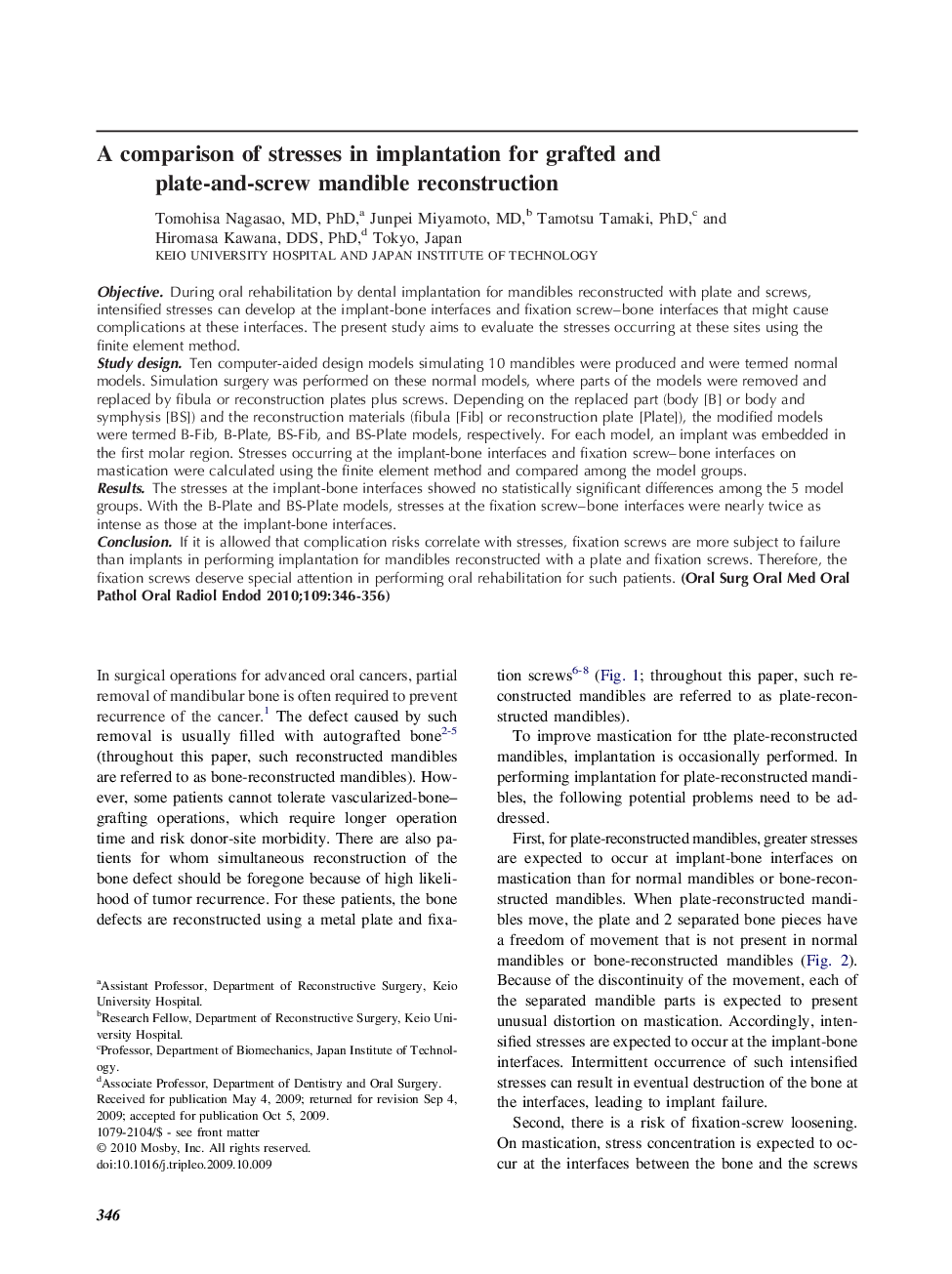| Article ID | Journal | Published Year | Pages | File Type |
|---|---|---|---|---|
| 3167671 | Oral Surgery, Oral Medicine, Oral Pathology, Oral Radiology, and Endodontology | 2010 | 11 Pages |
ObjectiveDuring oral rehabilitation by dental implantation for mandibles reconstructed with plate and screws, intensified stresses can develop at the implant-bone interfaces and fixation screw–bone interfaces that might cause complications at these interfaces. The present study aims to evaluate the stresses occurring at these sites using the finite element method.Study designTen computer-aided design models simulating 10 mandibles were produced and were termed normal models. Simulation surgery was performed on these normal models, where parts of the models were removed and replaced by fibula or reconstruction plates plus screws. Depending on the replaced part (body [B] or body and symphysis [BS]) and the reconstruction materials (fibula [Fib] or reconstruction plate [Plate]), the modified models were termed B-Fib, B-Plate, BS-Fib, and BS-Plate models, respectively. For each model, an implant was embedded in the first molar region. Stresses occurring at the implant-bone interfaces and fixation screw–bone interfaces on mastication were calculated using the finite element method and compared among the model groups.ResultsThe stresses at the implant-bone interfaces showed no statistically significant differences among the 5 model groups. With the B-Plate and BS-Plate models, stresses at the fixation screw–bone interfaces were nearly twice as intense as those at the implant-bone interfaces.ConclusionIf it is allowed that complication risks correlate with stresses, fixation screws are more subject to failure than implants in performing implantation for mandibles reconstructed with a plate and fixation screws. Therefore, the fixation screws deserve special attention in performing oral rehabilitation for such patients.
